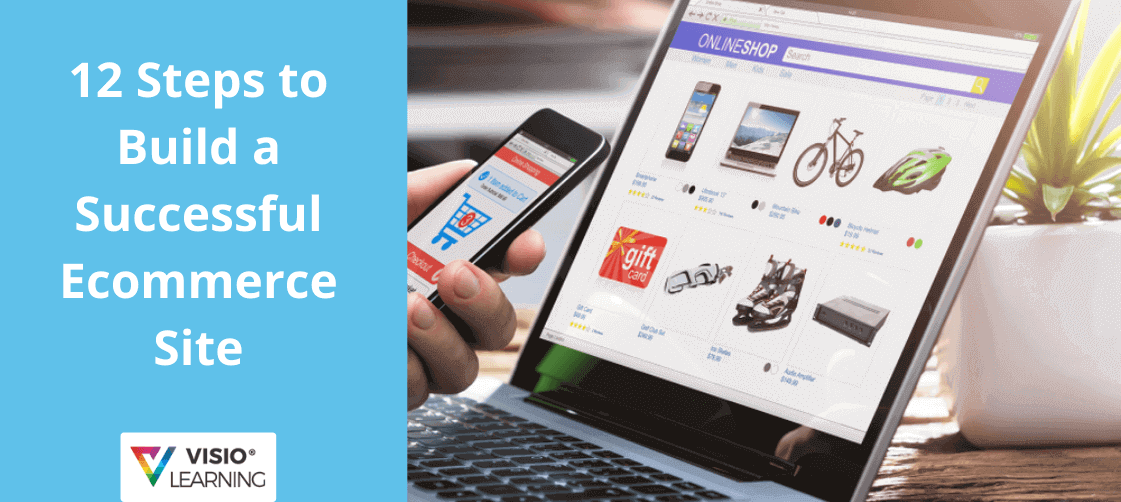
In the history books, there are few industries that skyrocketed and kept going higher and higher. Ecommerce is one of them. The numbers in terms of sales and profits of top successful eCommerce sites are ridiculously high.
The most intriguing part is that the numbers keep increasing as each year passes by. Not many experts could predict it a decade back because back then, online shopping just started to become a thing everywhere.
Now the scenario is entirely different. Experts predict that eCommerce will surpass £2 trillion in sales in the next few years. These numbers are no surprise because so many people are switching to e-commerce as their primary business.
This begs the question, how much money do successful eCommerce sites make? The answer depends on a number of factors.
How well are you promoting your site? Does your website draw enough traffic? Was your site flawlessly built in the very first place? And so many others.
The main purpose of this blog is to ensure you start your journey the right way! Because all ends well that starts well. Yeah, we gave our own twist to that!
The Steps Towards Successful Ecommerce Site
If you know what to do, right from the start, it’ll be a stepping stone to make your eCommerce site flourish in no time. Here are 12 steps in detail about how to build a successful eCommerce site.
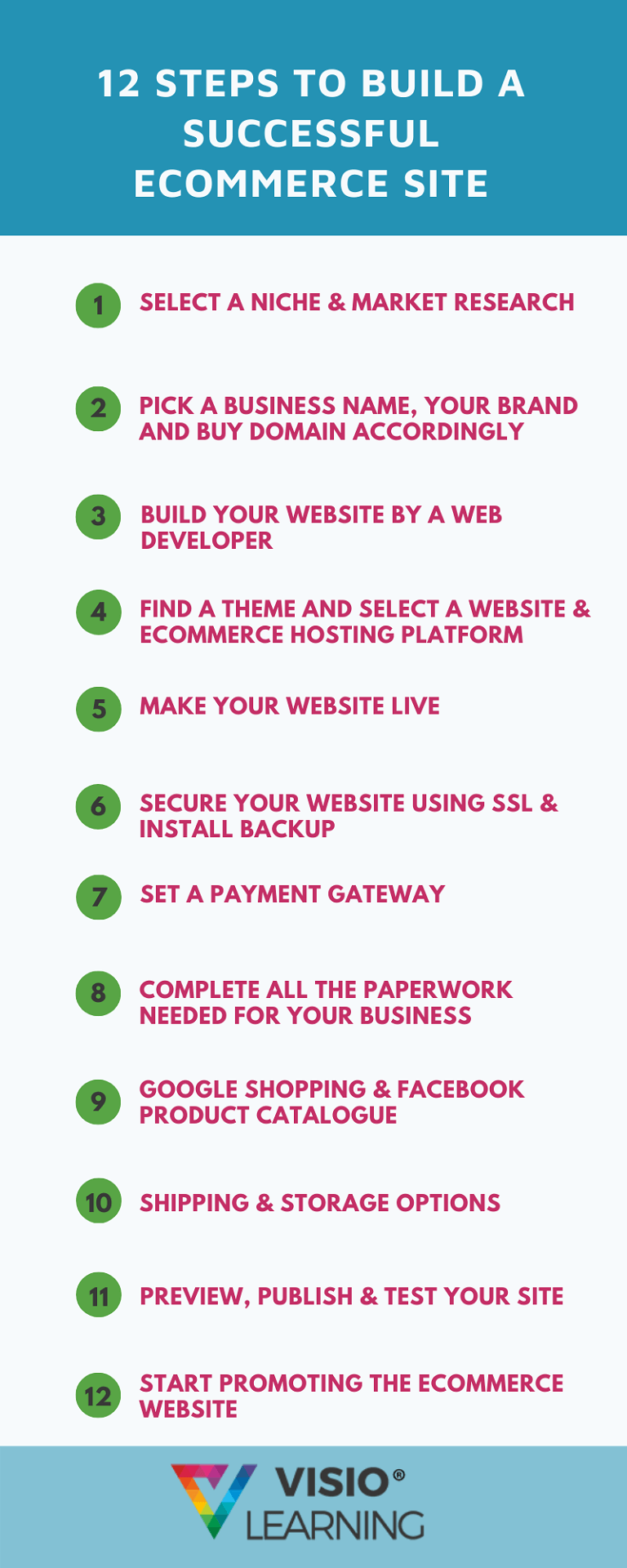
1. Select a Niche & Market Research
One of the very first things to do for making a successful eCommerce site is selecting a particular niche and doing market research. If you already have planned what your eCommerce brand and product will be, it is likely you have found your niche. But it is very important that you do complete market research on the niche you’re building your brand on.
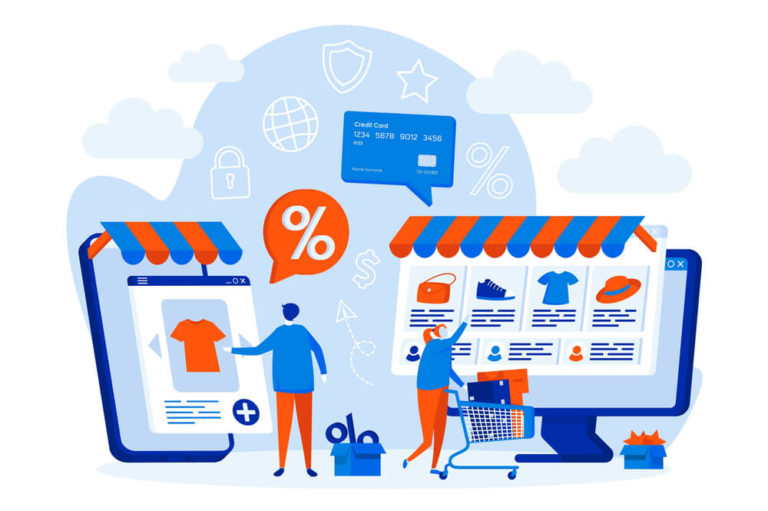
Niche Research
Many people underestimate niche & market research and think purchasing a domain name straight away is what they should go for.
As a result, miss out on something significant; the importance of both niche & market research. You know what makes a successful eCommerce site, an ideal niche. Hence, niche research!
First and foremost, the niche you choose has to be something you are passionate about. In that way, your productivity will be higher, you will learn faster, stay motivated, optimistic, make fewer mistakes, so end up making better decisions.
It will be best to consider 2-3 niches before selecting the one that’s best for you.
Market Research
Next, you have to conduct market research on those niches. See if those niches are feasible. Is it trendy or not? Is it profitable or not? How much competition will you face? Will you be able to cope up with the pricing or not? What can be your distributing system?
To help you with trends and finding profitable products, you can always analyse other tops of the food chain eCommerce sites like Amazon, eBay, Walmart, Target, Alibaba and few others.
When it comes to competition, trendy products have higher competition. And it is also obvious that you are more likely to do better with less competition. So make sure you keep a balance between both.
2. Pick a Name for Your Brand and Buy a Domain Accordingly
What is a brand without its name? Select a catchy brand name for the business. It should be short, attractive and relevant to the business. This will be the name everyone will know your brand with and will go in all kinds of paperwork as well as in the website domain.

Business or Brand Name
All the 12 steps that we will mention are important, but some are extra important. This step is one of those that are extra important as people will know your website, they will know you by this name.
You have to get creative, innovative, imaginative and original. It has to be a name that your customers can boost about to their family, friends and colleagues. We are sure you noticed that the most successful eCommerce site have the best inventive names.
You also make sure your brand name is unique. That it is not copying any business or anything that has already been trademarked and copyrighted. You don’t want to get banned or penalised for any such offence.
Buying Domain
Once you are done deciding your brand/business name, it does come down to a bit of luck when buying the domain. There can be a scenario where you have chosen a name after hours of thinking only to see the domain has been brought already. That doesn’t mean your journey to build a successful eCommerce site is over.
There are two solutions to this scenario. One is to buy the domain from the person who bought it, and the other is to spend another hour or so choosing another name.
You will most likely have to go for the second option because in most cases, you have to pay a huge amount of money to buy back a domain.
With that said, there are websites like GoDaddy and Bluehost from which you can purchase a domain costing under £8.
3. Build Your Website

After you are done searching your niche and coming up with a splendid name for your website, now it is time to build your website.
If you know how to make a website, then you can make your own website, but we would still suggest hiring a web developer. Because you need your website to be flawless & professional, a successful eCommerce site is very different from a regular website.
One statistics show that 73% of people and companies invest in web development to help them stand out from their competitors. And being unique is what you want!
Points to Remember When Hiring a Web Developer
When hiring, it is best to ask for references from other top eCommerce websites or websites you enjoy visiting.
A few more things you need to make sure of. One is asking the developer about his/her previous works. Secondly, You need to know how long it will take to make your website. Thirdly, prioritise developers with a graphics background, as they can help you even more with design.
Lastly and most importantly, make sure you both are on the same page, you both share the same plan and vision.
4. Find a Theme and Select a Web Hosting Platform
You can make your work easier to build a successful eCommerce site. It can be done by selecting a hosting platform like WordPress and by shopping for website themes, which you can find in plenty in different website theme shops like ThemeForest.
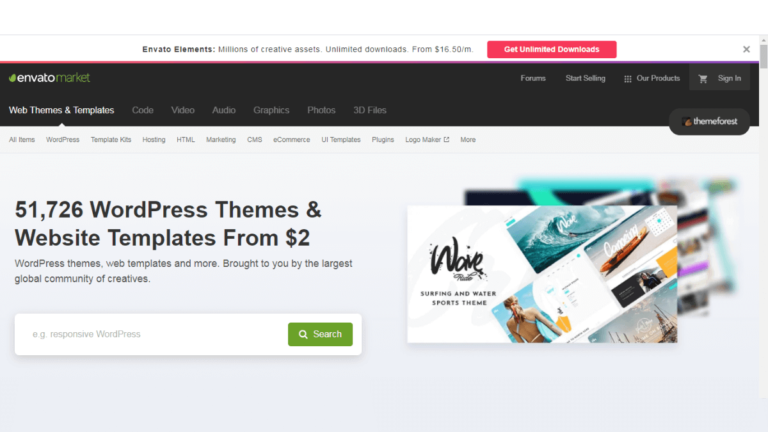
Theme
A theme is important as a user’s experience depends a lot on the theme of a website. If you make one wrong choice while choosing a theme, you can mess up your website as well as its design completely.
Besides, let’s be honest. Wouldn’t you like to visit a website again and again if it has the perfect design and provides good service?
The list of benefits of having an attractive, great quality theme is endless. It will obviously be eye-catching, have more features, will improve user experience, easier & simpler to maintain, give you higher conversion rates and increase your traffic as you will be more likely to rank higher in Google.
There are free themes available, but they don’t have all the features and isn’t ideal for the long run. So we would suggest you buy a theme instead of using a free one.
Now to buy a theme you can go to ThemeForest which is the #1 marketplace for website templates. There are over 28,000 website templates of all kinds to choose from. The prices of a template start from as low as £1!
Website & Ecommerce Hosting
Now onto website & e-commerce hosting platform. There are top platforms like WordPress, Shopify, BigCommerce, Magento and WooCommerce that are reliable and will save you both time and money.
How it will save money is understandable, but time? Well, a developer will be more familiar with these platforms, so it will take them less time and will also be less likely to make a mistake.
In terms of reliability, you need a hosting that you can rely on because if the hosting malfunctions, your site will be completely shut down. This will result in you losing your trusted customers, and you will also rank lower in Google.
5. Make Your Website Live

Many people don’t make their websites live. Instead, they wait to complete creating the whole website with products, product reviews and all.
What they don’t understand is that all they need is a proper website with only a homepage, contact page and an about us page to go live.
And going live as soon as possible establishes your legitimacy, meaning you can negotiate deals with your vendors easily.
Plus, when reaching out to bloggers and reporters, they can see that you have a website and are credible. Also, these sources can now link back to your website, which is essential for building SEO.
6. Secure Your Website Using SSL & Install Backup
It is very important for a successful eCommerce site to have a high level of security. The following steps will help you protect your website from cyber attacks.

SSL Certificate
An SSL certificate encrypts all the sensitive information shared on a website. Installing an SSL certificate will give you the green lock symbol that you see on websites next to the URLs when reading blogs or online shopping.
It is not a must, but it plays a huge role in the way your potential customer views your website. If your website has that symbol, it means your website is well known and secure.
So they won’t hesitate to make a purchase and to share sensitive information as you, any hacker or any third party can’t get access to that information. All successful eCommerce sites have an SSL certificate.
Install Backup
If there ever is an issue with your website or your website shuts down due to a malfunction of your hosting or service provider, you might lose all your data.
To ensure you recover all your data and hard work, you need to use a website backup service that will back up your site regularly.
7. Set a Payment Gateway

Establishing a successful eCommerce site means you have to make every process simple and easy for your customers to go through the buyer’s journey. This includes having a swift payment method that will be suitable for the majority of your customers.
Payment Gateway
There are many payment gateways to choose from. Each of them has its own benefits and drawbacks, and a lot of factors depend on which country you are living in.
Regardless of these factors, payment gateways like PayPal, Stripe, 2Checkout, Authorize.net and Payline are probably the top 5.
Setting up a payment gateway consumes a good amount of time. That is why you need to start this process before you launch your website completely.
Your website should have a privacy policy, return policy, a secure checkout process, your shipping and delivery methods, email address and a customer service phone number that will be available 24/7. These must be there to process to the next task.
Now, there are few things that you need to show to the processors. A state ID or driver’s licence, a bank account where the funds of your business will be deposited, clean credit history and a federal tax ID.
Furthermore, it is not easy to set up your gateway and process credit card. Mainly because the processors mostly don’t want to take big risks on a business that is new or a business that might not be successful.
You must convince and prove to them why your business will be among the successful eCommerce site. You can do that by writing them a cover letter explaining all your plans and vision for your eCommerce site.
Three Types of Payments
Here are several ways of payment that you can include in your eCommerce website.
Redirects –
Redirect takes the customer to another site to make the payment. It is great for retailers as the third party will be responsible for security issues. PayPal is the most popular third party for redirects.
Payment off-site, Checkout on-site –
Your website will collect all the details, but the payment will be made off-site. Stripe is the leading company here. Your site must be encrypted correctly so that information is passed on safely.
On-site Payment –
Everything will happen on your website. All the responsibility is yours. Only large companies do this method, as they can afford to keep it working and secure.
8. Complete All the Paperwork Needed for Your Business

Building a successful eCommerce website takes a lot of planning, determination and vision. You have to treat it like an actual business, where all the profits and losses matter.
So why not also do all the legal paperwork? If you are actually serious with your project, doing all the legal paperwork needed will come out to be very helpful, especially once you establish your eCommerce site.
Start strategising your plans first and come up with the place you want to permanently settle down into. After that, check what all you need to fill out with the state’s Secretary of State & Department of Taxation or Revenue.
The next step is to register the appropriate articles of organisation or incorporation with your state’s Secretary of State on whether your eCommerce site is a non-profit, limited liability, corporation or professional organisation.
If you make taxable sales, you will need a Vendor’s Licence or a Seller’s Permit with the appropriate state agency, and your vendor will surely ask for it.
If you are starting a non-profit, limited liability, corporation or professional organisation, make sure to check with the state Attorney General’s office to know about all the paperwork you need to fill up.
Nevertheless, the most common legal formation people choose for an eCommerce site includes LLC, sole proprietorship and corporation.
The reason LLC is common is that it involves less paperwork, and you will pay your tax as a sole proprietor and not as a corporation.
But, but after all, the best you can do is to hire a local attorney to help you with all the legal issues. Yes, you have to bear the additional cost in both hiring and licence, but it is worth it.
9. Google Shopping & Facebook Product Catalogue
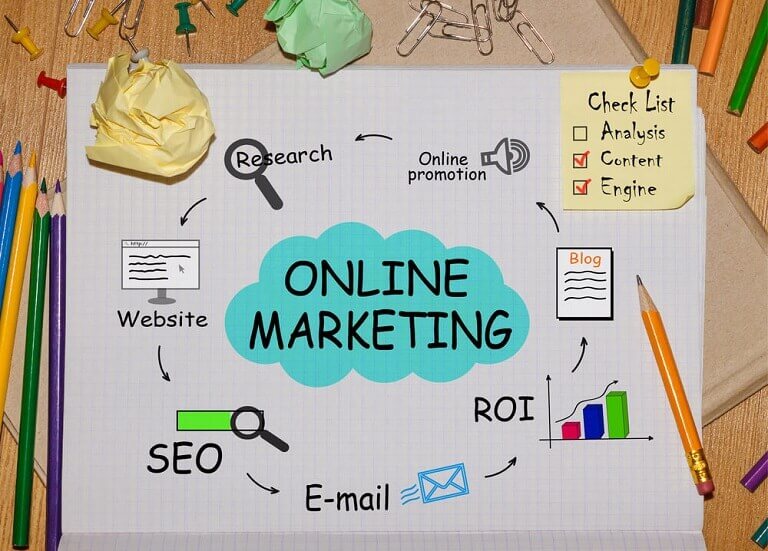
SEO is what will get you the traffic you need to have more sales, better conversion rates and all. There are some things you can do before releasing a website to help with your SEO,
Remember we mentioned sources (bloggers & reporters) linking back to your website increases your SEO and can be done before finalising your website.
Google Shopping Campaign, on the other hand, has to be set up in the final stages, and it ensures product images will appear whenever users search for relevant keywords.
The same data feed can be used from the merchant centre and uploaded to Facebook’s product catalogue.
10. Shipping & Storage Options

You have to plan out your shipping cost and storage options for a successful eCommerce site. Here is how you can consider planning it.
Shipping Cost
Shipping itself is hectic. You need to make sure your product reaches on time, safe and sound.
Shipping cost is a major issue, especially when you are new to eCommerce because it is difficult to balance the books.
You need to make sure your customers are not paying too much, and you are also at the same time getting enough money to balance your outcomes and investment.
If you want to make a bit more profit, you can increase the shipping price, but you have to be careful because 44% of online shoppers opt out of purchasing due to high shipping costs.
You can instead maybe increase the price of the product and keep the shipping cost low. Go for any strategy as long as it is doing good for your business.
Storage & Shipping
You need to have a place to store your product from your vendors. To make this decision-making process simpler, answer the questions below.
Will you use UPS, FedEx, USPS or all three? What is the time frame you will be shipping in? Will you make use of drop shipping or store all your inventory? What product will you be shipping? What size packaging? Are there any shipping restrictions on your product? And lastly, will you include any promotional materials in your package?
Once you answer these questions, you will have a clear idea of which route to go for.
11. Preview, Publish & Test Your Site
We are almost at the end of our journey to make a successful eCommerce site. After utilizing all the methods to develop an eCommerce site, you need to preview the website, publish and test your site. Bugfix when necessary. One more thing, do not forget to update your eCommerce with the most recent trends and technology.

Preview & Publish
After you are done spending all the hours, all the days, all the months in the world, you still will have to preview your website and then only publish it. It is the essential step to your successful eCommerce site.
We know, it is something obvious many people do and if you are one of them. Good to know we are on the same page here.
By preview, we mean check everything from A to Z. Take your time and don’t hesitate to contact your developer to make changes. Even if you make frequent changes, it is okay because you need your website to be the best.
Test Your Website
Place yourself in the shoes of a buyer and see if you are convinced of the experience. Check the Homepage, Search Result, Product Details, Product Reviews, Product Suggestions, Order Form, Order Confirmation, Login Form Page and Account Page.
In addition, create an account and log in to use the website. After a while, check your payment methods to see if they work.
Test out the Shopping Cart, Pagination, Search Form, Sorting and Filters. Focus on the post-purchase window. Like, try returning a product, cancel the order.
Literally, do everything and make changes if you have to.
12. Promote Your Ecommerce Website
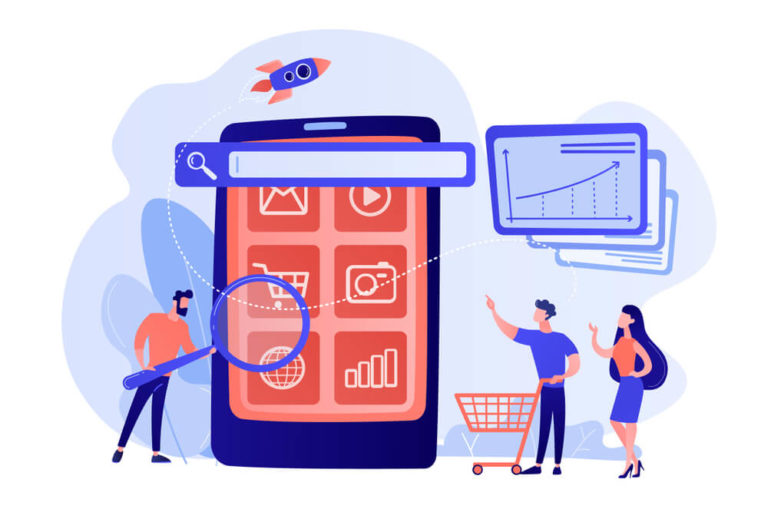
Making your website was just the start of your journey. All of your success will depend on how you promote this website from now on.
Promoting your website is what will get you all the traffic, hence it is what makes a successful eCommerce site, mainly. Many people think user experience is what gets you the traffic. Nonetheless, it is actually not the case here.
Don’t get me wrong, you obviously need your user experience to be top-notch, but it works more on retaining your customers than to bring more customers.
If you purely want to know how much marketing will help your business with stats…
Well, there are over 4.72 billion internet users each day. So you have at least a billion people to whom you can reach out to.
A suggestion from our side will be to make your website as mobile-friendly as possible. Firstly, because it makes the user experience better for those using mobile. Secondly, it is one of the most important ranking factors in SEO. Thirdly, over 3 billion people use mobile phones daily.
Anyway, back to promotion. There are tools out there that can help you generate more traffic. Use the free ones first before upgrading yourself to the premium ones.
At the end of the day, it is all about planning and execution. Just plan and execute your ideas.
Conclusion
Success needs a lot of hard work, determination, vision, and patience. It is the exact same for successful eCommerce sites. They all started from scratch and eventually climbed up the ladder with time.
The 12 mentioned steps will help you build an eCommerce website, but you need a guide that will guide you to the top of the food chain. Here at VisionLearning, we have a six-week course on WordPress E-commerce Management that will provide you with all the necessary assets you need.
Six weeks to build your career! Not bad, right?
Approved Course Centre
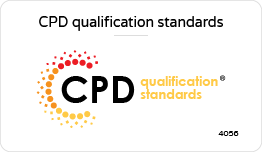
Our Courses Partners

Registered with the UK Register of Learning Providers (UKRLP)
UKPRN: 10063816

0 responses on "12 Steps to Build a Successful Ecommerce Site"